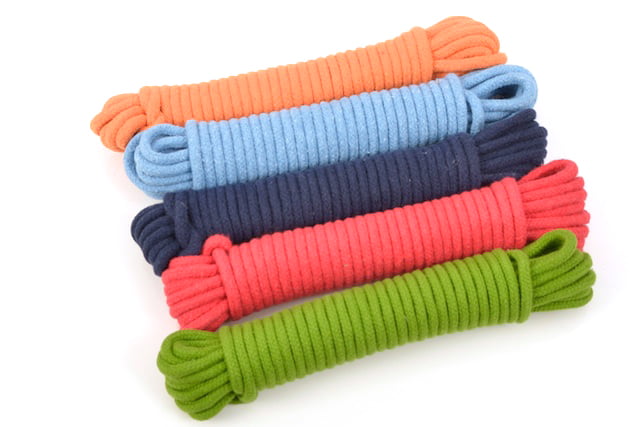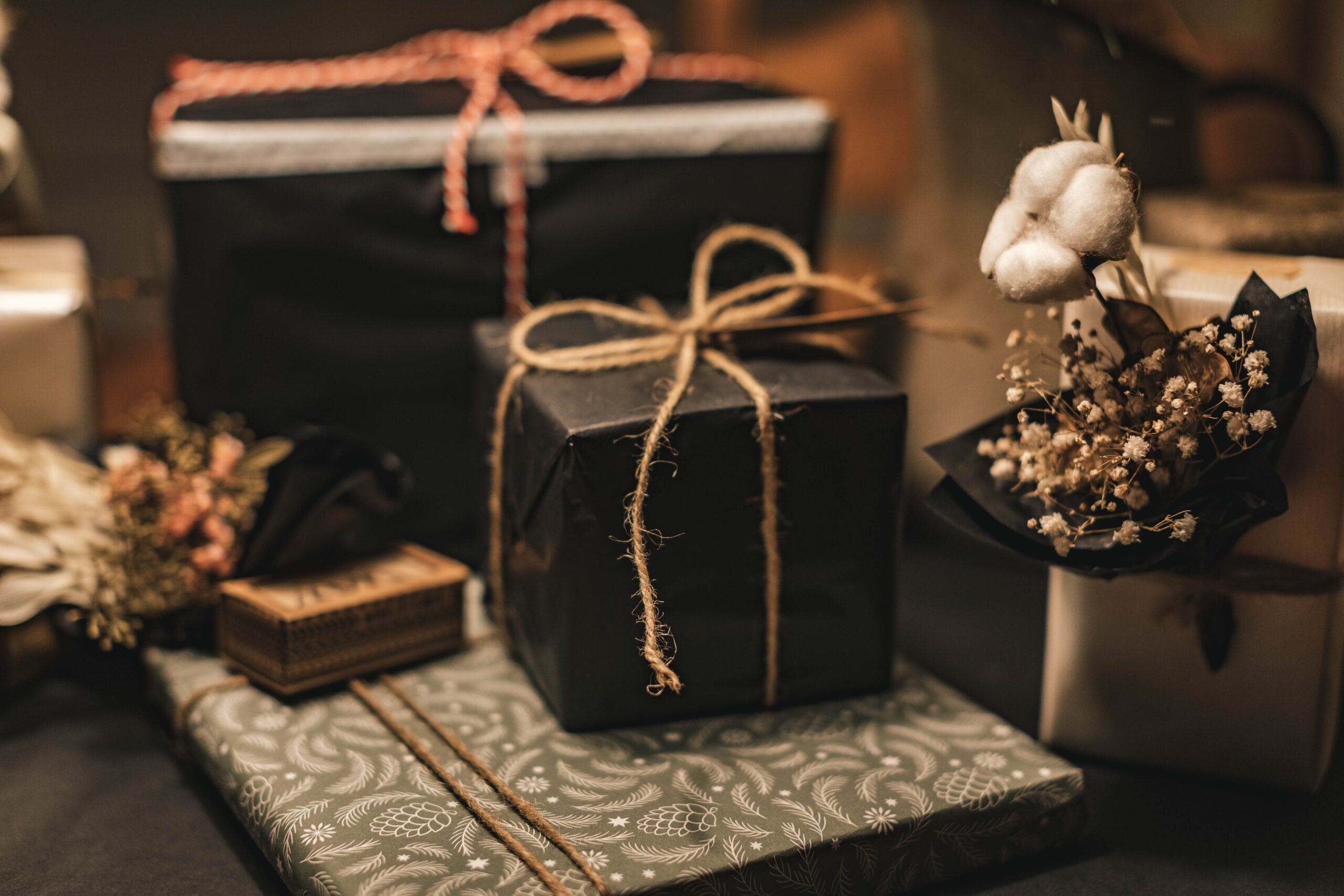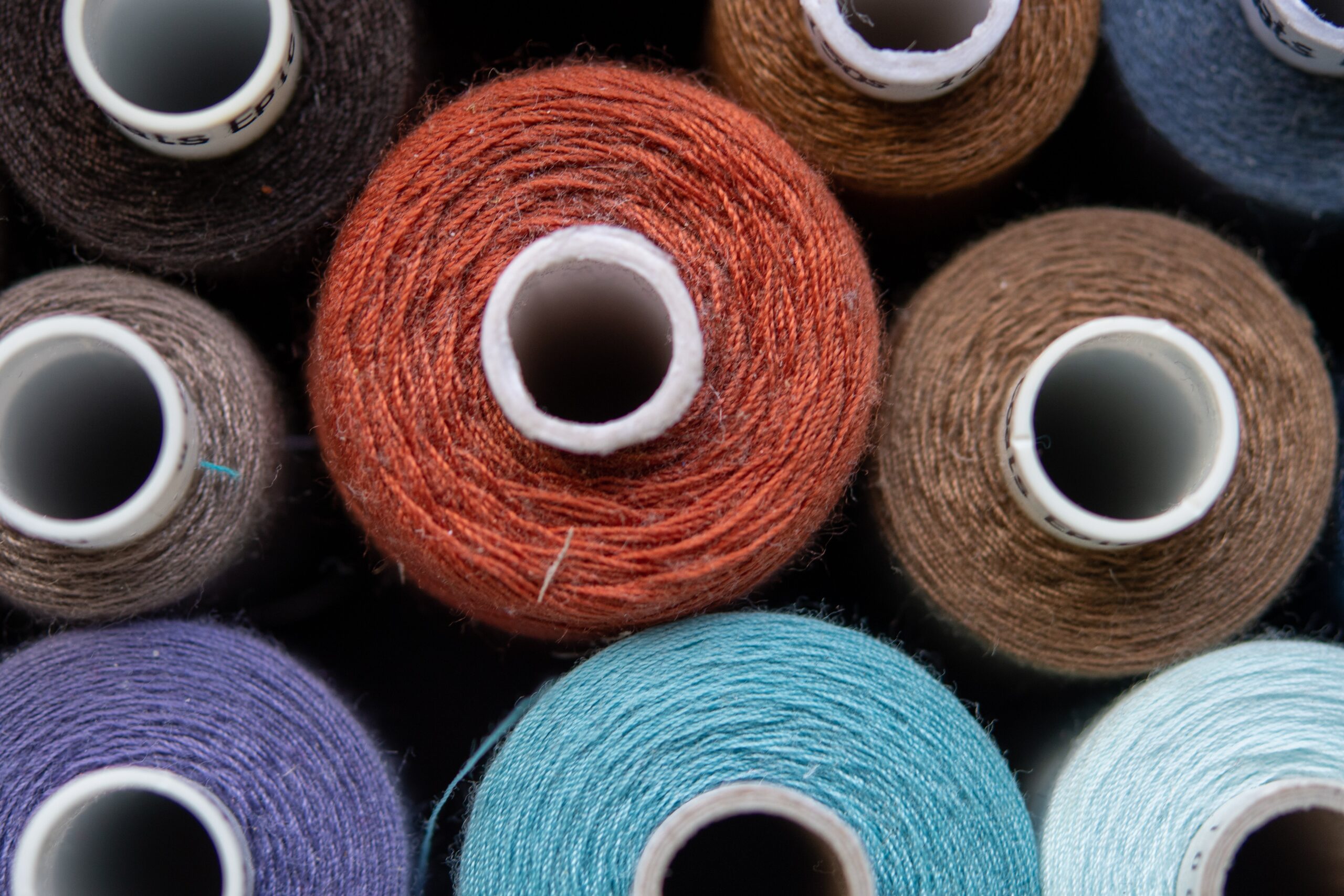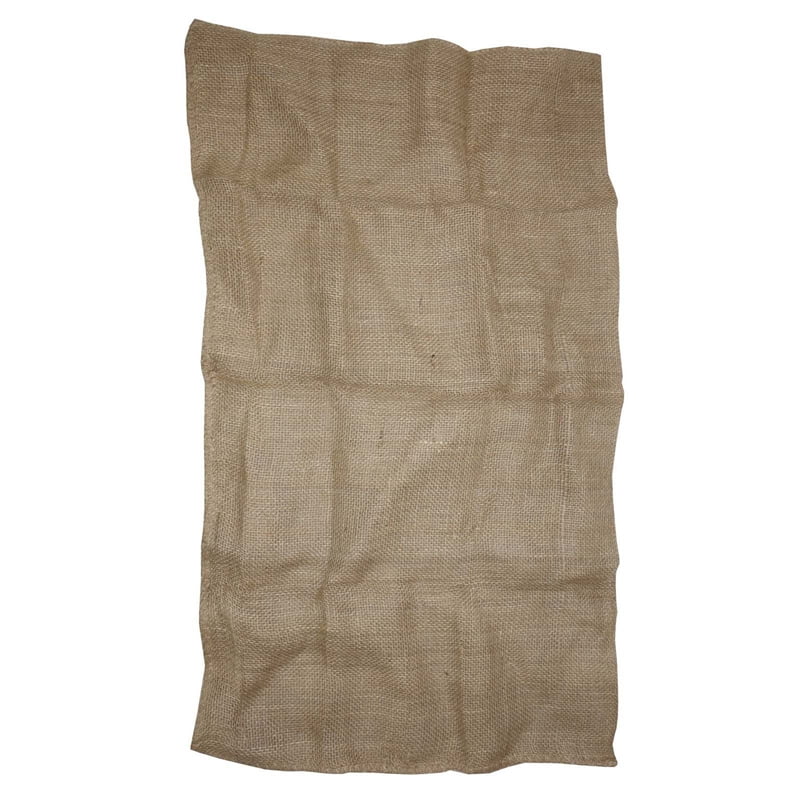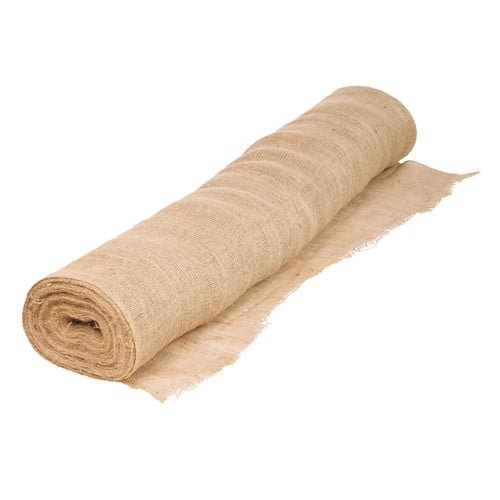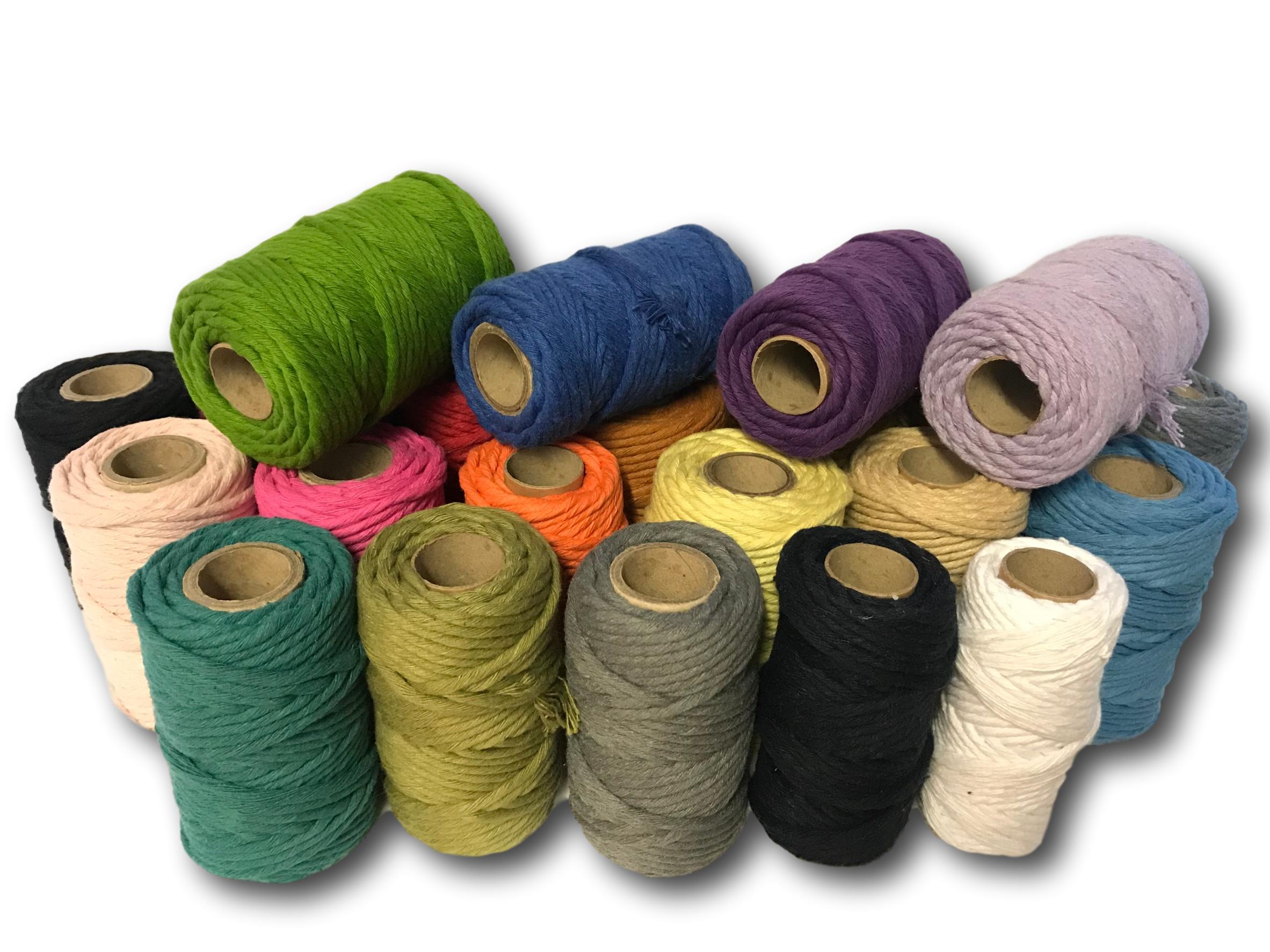
Macrame has made a stylish comeback, captivating DIY crafters once again with its blend of simplicity and rustic style.
Whether you’re new to macrame or seasoned in using rope for crafting, macrame cord is an essential tool – offering endless creative possibilities. From intricate wall hangings to functional and fashionable accessories like handbags and jewellery, macrame cord is the versatile material behind it all.
Keep reading as we explore 30 inspiring ways to use macrame cords, showcasing just how this simple cord can be transformed into stunning decor, gifts, and practical items. Dive in and discover your next macrame project!
What is macrame cord?
Macrame cord is a type of thick, strong cord or rope, often used in the art of macrame – a craft that involves knotting cords to create decorative patterns and designs. It is typically made from natural rope fibres like cotton and jute, or synthetic materials like nylon.
The cord comes in various thicknesses and colours, allowing for a range of creative possibilities. The texture, strength, and flexibility of macrame cord make it ideal for creating intricate, durable, and visually appealing handcrafted pieces.
Want to learn more? Explore our comprehensive guides to explore how ropes are made and the different types of ropes.
Why use macrame cord?
Using macrame cord for your craft projects has a wide range of advantages, including:
1. Strength and durability
Macrame cord is designed to be strong and durable, ensuring that the finished pieces, whether decorative or functional, can hold weight and withstand wear.
2. Flexibility and texture
The cord’s flexibility allows for easy knotting and manipulation, making it possible to create intricate patterns and designs. Its texture adds a natural, tactile quality to the finished product.
3. Variety of sizes and materials
Macrame cord comes in various thicknesses, materials, and colours, allowing for a wide range of creative possibilities, and the ability to match the cord to the specific requirements of a project – whether it needs to be delicate or sturdy.
4. Aesthetic appeal
Natural fibre cords like cotton or jute have a rustic, organic look that enhances the overall aesthetic of macrame creations, making them popular for home decor items.
5. Ease of use
The structure of macrame cord is designed to hold knots well without slipping, making it easier for beginners and experts alike to create consistent and precise designs.
What can you do with macrame cord?
With the right crafty mind, there’s nothing you can’t make with macrame cord. From home decor and practical items to accessories and gifts – the list could be endless.
Here are our top 30 of the best macrame cord craft ideas:
Home decor
Macrame cord is most known for creating unique and intricate rope home decor items. These could include things such as:
1. Wall hangings
Create intricate and beautiful macrame wall hangings that can add texture and warmth to any room.
2. Plant hangers
Design functional and decorative knotted macrame plant hangers to display your favourite plants inside and outside the home.
3. Curtains
Craft intricate and unique woven curtains for doors, windows, or even as room dividers, using macrame cord.
4. Dreamcatchers
Make personalised dreamcatchers using threaded and woven macrame cord and beads.
5. Coasters
Create woven macrame coasters for your home that are both decorative and functional.
6. Table runners
Design elegant table runners to elevate your dining experience by weaving macrame cord.
7. Pillows
Make woven and knotted macrame pillow covers for a boho-chic vibe to your home decor.
8. Hammocks
Craft a cosy hammock for indoor or outdoor use, by weaving and knotting strong, durable macrame cord.
9. Shelves
Create hanging shelves using knotted and woven macrame cord to display books, plants, or decor items.
10. Chandeliers
Design unique macrame light fixtures or chandeliers, to add a rustic touch to any room.
11. Key holders
Make decorative wall-mounted key holders with knotted and woven macrame designs.
Fashion and accessories
Ever thought about using macrame cord to make a fashion statement? Here are some fun ways you can incorporate macrame into your DIY wardrobe:
12. Jewellery
Craft necklaces, friendship bracelets, earrings, and anklets using woven macrame techniques.
13. Bags
Design bohemian-style handbags, totes, or clutches by knotting and weaving macrame cord.
14. Belts
Create fashionable and customisable belts with knotted and woven macrame cord.
15. Headbands
Make stylish macrame cord headbands that can complement your outfits.
16. Hat bands
Decorate hats with woven macrame bands for a colourful, personalised touch.
17. Sandals
Design unique, woven macrame sandals for a summer look.
18. Watch straps
Customise watch straps with woven macrame patterns, for a trendy, boho style.
Crafts and gifts
If you love to make a handmade gift, macrame cord is one of the best tools to use! You can make a wide variety of DIY gifts, including:
19. Bookmarks
Create intricate, woven macrame cord bookmarks as thoughtful gifts, or for personal use.
20. Keychains
Make small macrame knotted keychains that can be personalised with a wide range of colours and charms.
21. Holiday ornaments
Use macrame cord to craft Christmas and Halloween DIY decorations and ornaments for around the home.
22. Wine bottle covers
Design decorative covers with woven macrame cord for wine bottles – perfect for gifts or table decor.
23. Gift wrap decorations
Use natural macrame cord to create unique and personalised embellishments for eco-friendly gift wrapping.
24. Dream jars
Decorate jars with woven macrame covers, turning them into unique lanterns or storage containers – often known as ‘dream jars’.
25. Pet accessories
Make durable and colourful collars, leashes, or toys by knotting and weaving macrame cord – one of the easiest DIY ways to make your home cat friendly (or dog-friendly, if you’re a dog person).
Practical uses
You can also use macrame cord to create a variety of DIY projects with practical uses, including:
26. Tote bags
Create durable and eco-friendly shopping totes by weaving natural fibre macrame cord into intricate designs.
27. Umbrella hanger
Design a hanging storage solution with knotted or woven macrame cord to keep umbrellas off the floor and stored handily by your door.
28. Chair covers
Customise chair backs or seats with intricate macrame cord woven designs.
29. Camera and phone straps
Macrame cord can be woven to make sturdy and stylish straps for cameras or mobile phones.
30. Water bottle holders
Use knotted or woven macrame cord to craft water bottle holders that can be slung over your shoulder for easy carrying.
Want to learn more about all the things you can do with cord or rope? We’re the experts? Head over to our helpful blog to find more DIY craft inspiration, or contact our friendly team today for advice on your next project!

